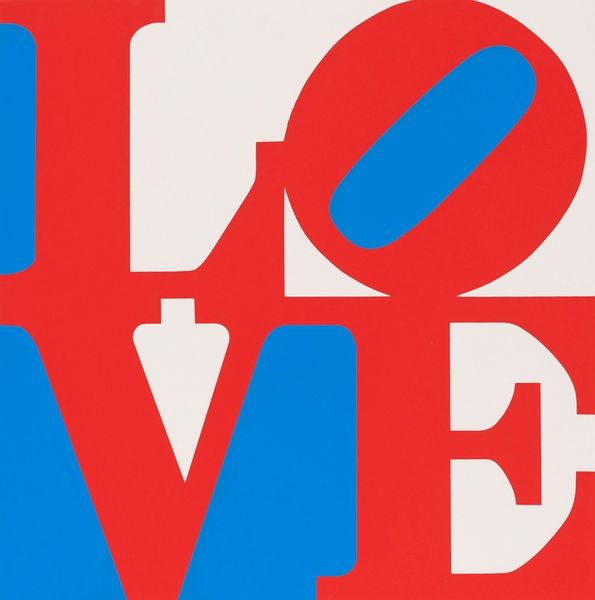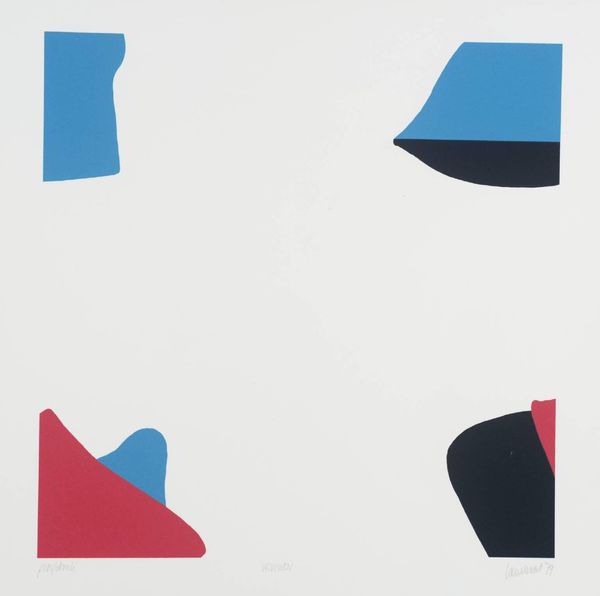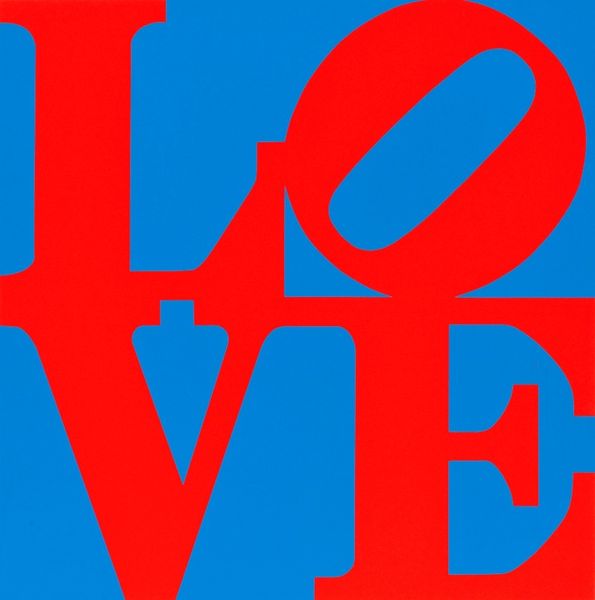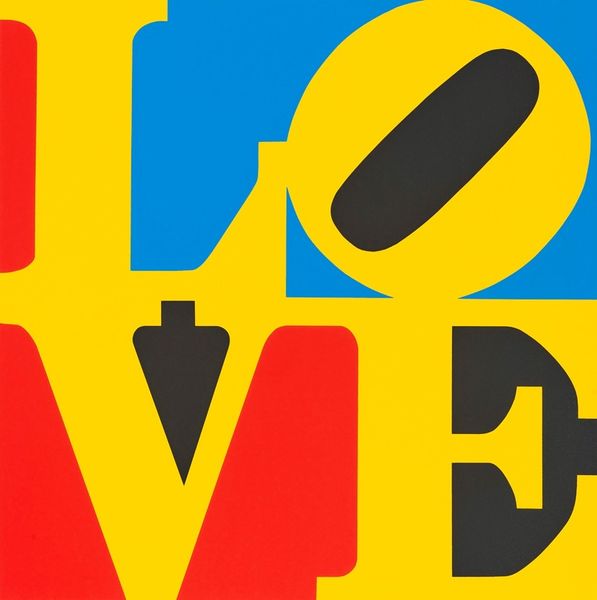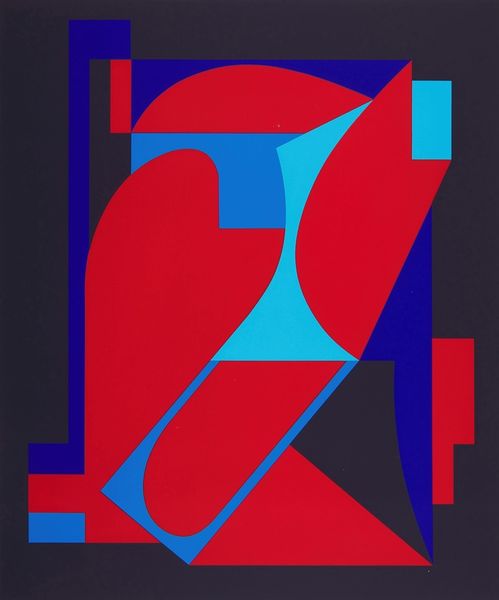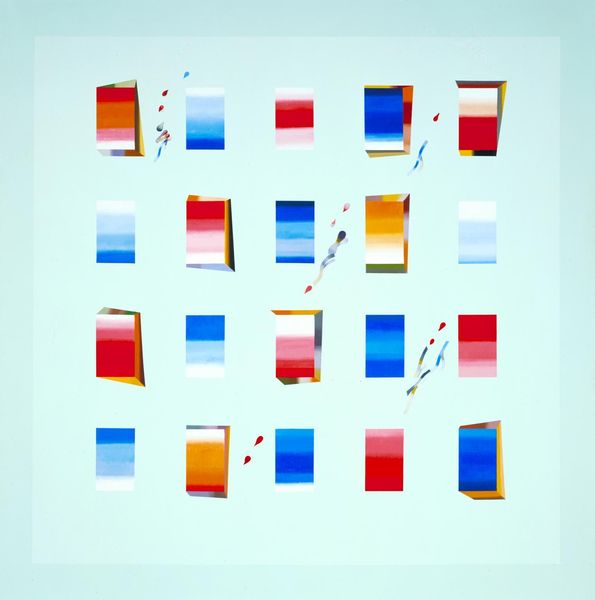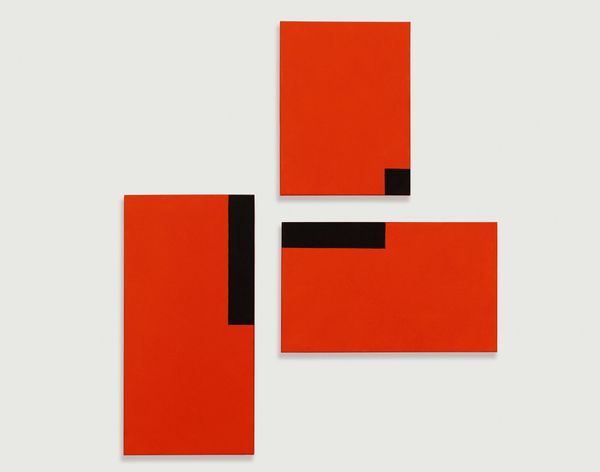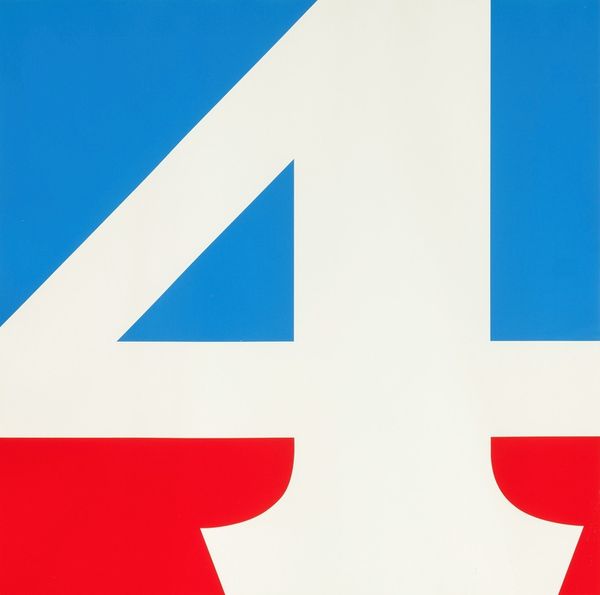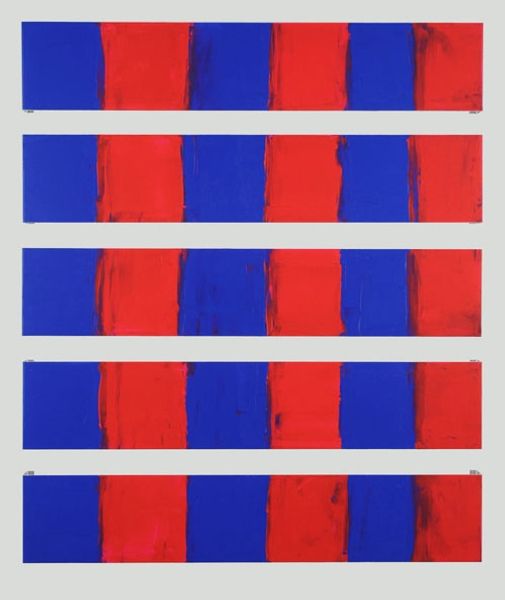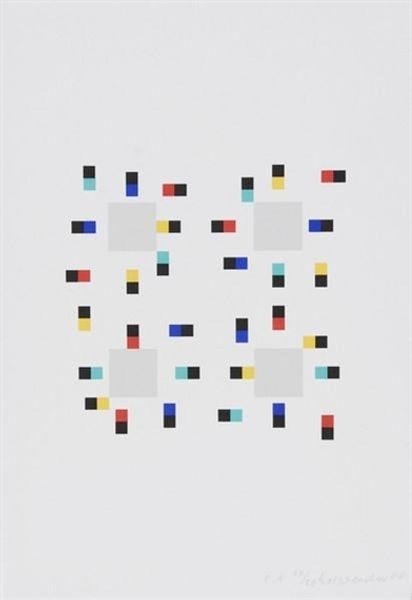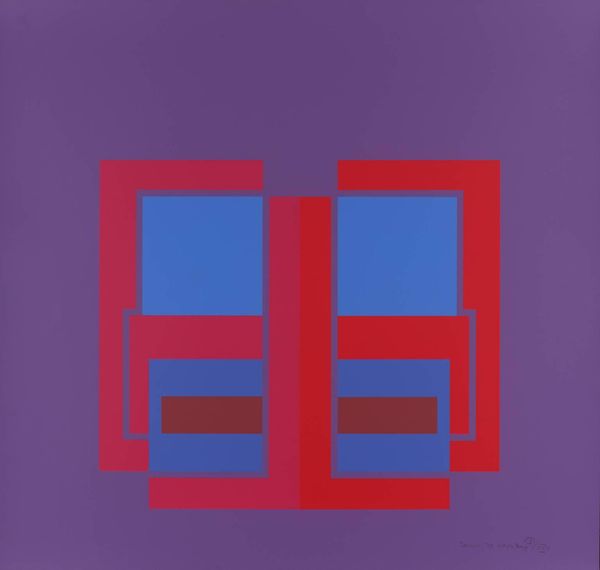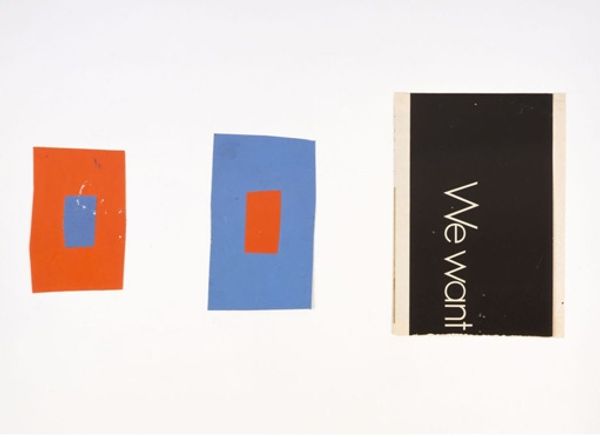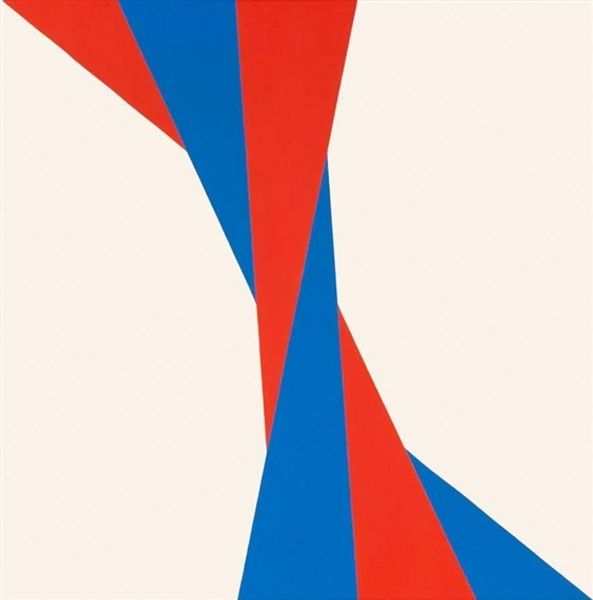
Copyright: Robert Indiana,Fair Use
Curator: What leaps out to me is this kind of playful austerity; so clean, so graphic. It feels incredibly iconic, instantly recognizable, but I can’t quite place it. Editor: This is Robert Indiana’s "Four Panel Love," printed in 1972. And I see what you mean about playful austerity. This print really epitomizes pop art's visual language, doesn’t it? Especially as it leverages that industrial feel through typography and sharp lines, really giving you those immediate vibes. Curator: Yeah, there's definitely something both comforting and kind of detached about that. It's love presented almost like… well, like signage. Did Indiana ever talk about that disconnect, that commercialization of emotion? Editor: Well, what's intriguing is how Indiana positions himself within a much broader lineage. This piece arrives on the heels of movements examining semiotics and structuralism where the very notion of signs were being unpacked. What can we *really* mean when we deploy "love"? Further, we need to think about how deeply identity is embroiled within what LOVE represents. What happens when certain groups are disenfranchised from this cultural message, for instance? What is unsaid, but still implied? Curator: Hmm. So, is Indiana challenging or complicit in diluting feeling, by mass-producing the feeling? It's like he's turning something deeply human into this… thing. That diagonal "O," though! Did you know he initially envisioned it upright? Editor: It really destabilizes the otherwise rigid geometry, right? Perhaps, there’s a sense of whimsy despite that underlying corporate feel? Regardless, I wonder how it spoke to viewers at the time. Now the symbolism around this is so prevalent. Has its effect waned? Curator: That's an interesting question. It's definitely woven into the cultural fabric at this point, but perhaps recognizing it is only half the story. It forces us to interrogate the context around love itself. We really do love differently from even 50 years ago! Editor: True, a contemporary understanding forces us to question if, perhaps, love, itself is an artifice? I think that is precisely the conversation that Indiana seeks to explore. What do you make of that for the viewers here today? Curator: Ultimately, viewing is about seeing! Now that we have started asking, they will see something totally different in this deceptively simple form, or set of forms. And hopefully, that will provoke some deeper reflection, too.
Comments
No comments
Be the first to comment and join the conversation on the ultimate creative platform.
